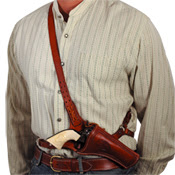Judy R wrote and asked a very good question: "When I am asking my horse to do something using pressure often she ignores me then until I guess the pressures builds and she blows up. An example if trying to teach her to side pass. I'll try to push her over with my leg as I have been taught using the ask, ask then demand with more pressure and tapping her with my leg and boot (I don't wear spurs). I do have to hold her to keep her from moving forward. With other things like trailer loading where sometimes I need to tap on her back legs with a lunge stick to get her to move forward she does fine without freaking out. I'm trying to figure it out but getting totally frustrated. Any insight?"
I know that frustration Judy. With your side pass example it's hard to answer that without watching you and your mare. I would go back to ground work and get your mare to move her front end and back end over independently of each other, and for her to do it well and when asked without a big deal, before you ask her to start side passing. It may also help to incorporate a reason for your side pass like moving to or away from a gate or fence.
When in the saddle, and asking for a side pass, make sure you don't keep your inside leg (leg that is in the direction of the movement) on her which would make her feel blocked in and want to move forward. It helps to tip and hold her head slightly outside as you use your outside leg to ask her to move over. You could also be leaning in one direction which normally makes the horse move in the opposite direction,.....even then there are some horses who may want to move to square up or move into the weight. The ground work first should help. And make sure your timing is good, so when you get a try from her, you immediately release the pressure.
Your bigger question seems to be "how much pressure is too much"? I am not from the school of making your horse doing something, because forcing her to do something when is extremely anxious is counter productive.
I think that any pressure that creates more anxiety in general and certainly more anxiety without any positive changes in your horse, are too much. You know your horses better than anyone, so I suggest being a good student to learn when that anxiety is too much which would make acceptance and learning difficult or impossible,....then back off before you get there. Make sure you reward her slightest try, again with an immediate release of pressure and give her a pause, as pauses will help her relax and that’s a place where they learn. Then build on that. Hope to hear back from you on what you learn is working for you. Safe Journey.

























